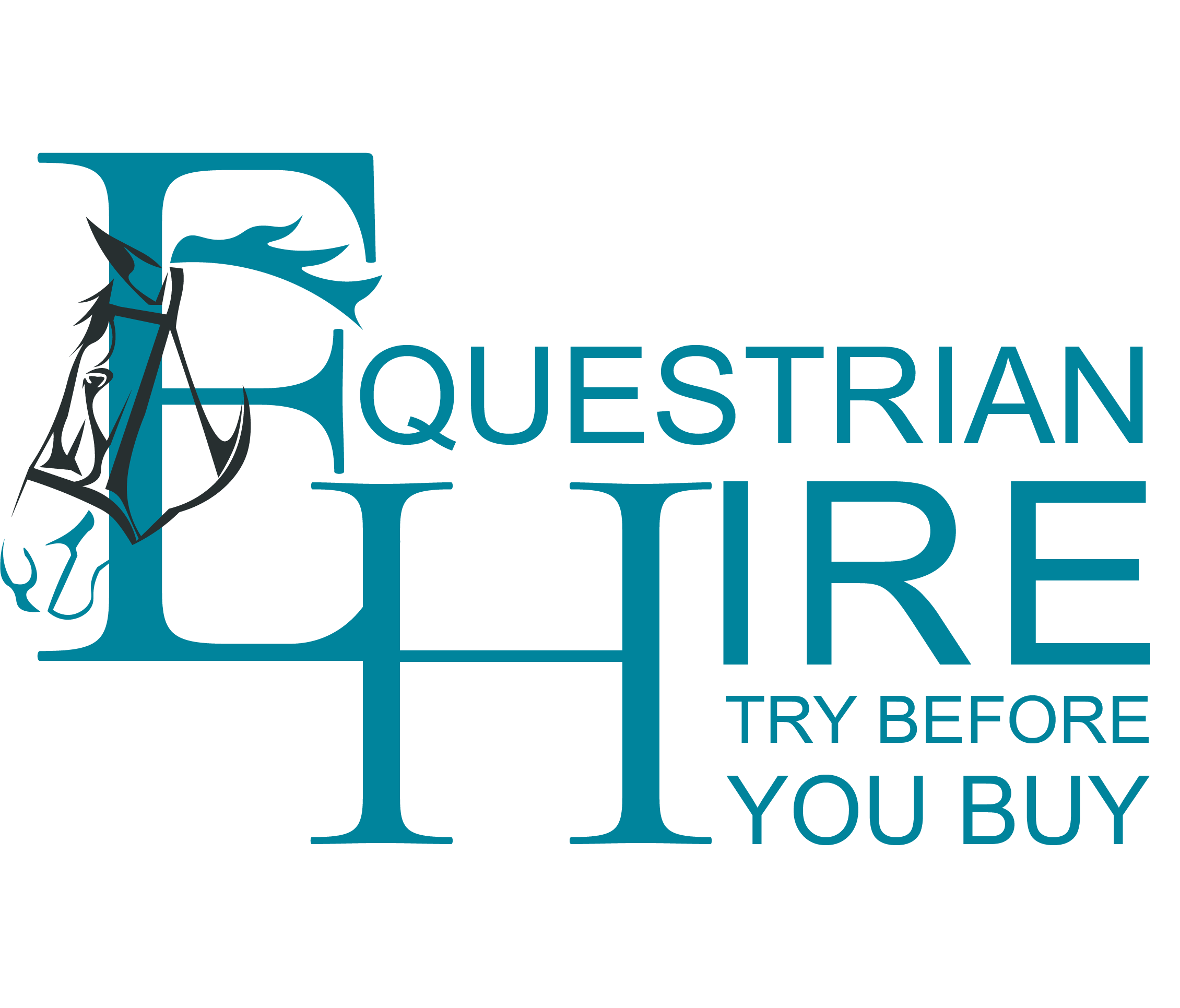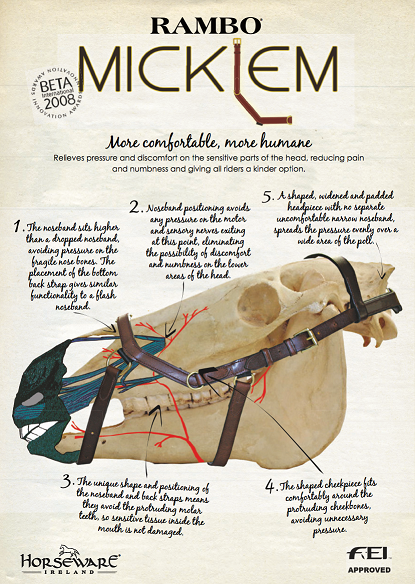The Rambo® Micklem Bridle was designed by William Micklem and was launched at BETA in 2008. William Micklem is an International coach & best selling author based in Ireland. He is a Fellow of the British Horse Society and a presenter at many international equestrian conferences. His book The Complete Horse Riding Manual is an international top seller. William owns and manages Annacrivey Stud in Co Wicklow with his wife Sarah, where he runs an elite breeding programme. William bred both Olympic Event horses; Madiba ridden by Karen O Connor and Zara Phillips’s High Kingdom.
How does the Micklem bridle differ to a normal bridle
The Micklem Bridle has a wide and padded headpiece which distributes the weight of the bridle evenly and comfortably, thus preventing all the weight going on the noseband and on the bones in the nose. There are 2 versions; the Multi Bridle and the Competition/Deluxe/Diamante Bridle. The Multi Bridle is the only Micklem bridle that you can use both with a bit, bitless, and as a lunge cavesson.
The horse’s head is a very sensitive area as the top of the jaw is much wider than the lower jaw. The Micklem Bridle is designed to follow the shape of the horse’s skull. The main areas it is designed to avoid are the cheek bones, pressure on the facial nerves and upper jaw molar teeth, as well as delicate bones at the end of the nose. Tight fitting cavessons and flash nosebands can cause discomfort to horses, these issues can affect the contact and subsequently your horse’s performance. A new study has also found that if the noseband is done up too tightly then this stops the horse’s hind legs being able to engage correctly.
William Micklem’s unique curved design with a slightly dropped noseband, avoids pressure on the protruding molars at the side of the jaw. The noseband of the Micklem Bridle sits higher than a flash noseband to avoid the fragile bones at the end of the nose. Tight flash & cavesson nosebands can put pressure on the main motor and sensory nerves that exit the skull; these are sited at the position of a traditional noseband. This tightness can cause some horses to rub their heads on a foreleg after work as this area is very sensitive and can become numb. Too much pressure in this area can also damage blood vessels and tissue which can create an enlargement of the fibrous tissue.
The bit clips are a tongue protection system relieving the pressure on the tongue and transferring the pressure onto the nose. This can helps horses that have tongue pressure issues or for horses that get their tongues over the bit, it can also help with horses that stick their tongues out to the side. In my experience horses that do start sticking their tongues out are flagging up that they are suffering from some form of discomfort and that this is could be bridle pressure.
The Micklem Multi bridle
This bridle has 3 bitless options; the first is attaching the reins to the rings on the noseband, which is rather like riding in a headcollar. The second is using a separate curb strap behind the jaw and then threading the rings through the rings of the noseband and attaching the reins to the curb strap. The 3rd, the strongest option is using a longer strap threaded through the headpiece, crossed under the jaw and fed through the rings of the noseband and then the reins are then attached to the rings of the strap.
I have fitted & sold over 2000 Micklem bridles. In my opinion, the Micklem bridle is the cleverest design of equine tack, since man first decided to climb onto a horse. There are now many companies trying to copy it but none, in my opinion, are as good as the original!
Many critics say it is a gadget, it is most definitely not! Why should all horses perform the same way, in a piece of tack that was designed hundreds of years ago? We don’t use a western saddle to show jump in! We have over the years, redesigned and developed the bit but until 2008, not the design of the traditional bridle.
Would the Micklem be suitable for your horse?
Discomfort or pain in a horse’s face can cause many symptoms;
- Not accepting or evading the contact,
- resisting when putting on the bridle,
- throwing their head in the air trying to avoid the bit,
- on and off the contact,
- chewing on the bit,
- head tilting,
- teeth grinding,
- sticking the tongue out to the side, to name a few.
Many people think that by changing the bit, this will sort out these types of problems. In most cases it doesn’t because the bridle is the problem.
Non seasonal head shaking or Trigeminal Mediated Head Shaking
In my experience, the Micklem bridle helps relieve the discomfort of horses with non-seasonal head shaking which is caused by the abnormal function of the Trigeminal Nerve. The Micklem bridle’s curved noseband and subsequent placement of the noseband higher up on the nose would give the horse some relief of pressure on this nerve. You rarely see non seasonal head shaking occur when a horse is eating out in a field with no head collar on. Some horses don’t head shake with a head collar on either, which has prompted some owners to ride in a head collar.
In the cases when I have supplied Micklem bridles to non-seasonal head shakers, their owners have reported back that their horse’s symptoms have been reduced by up to 80%. Another reason why trying a Micklem bridle first is such a good thing.
Sadly, in Seasonal Headshaking, the Micklem doesn’t seem to provide the same relief.
Susannah Secrett Equestrian Hire

